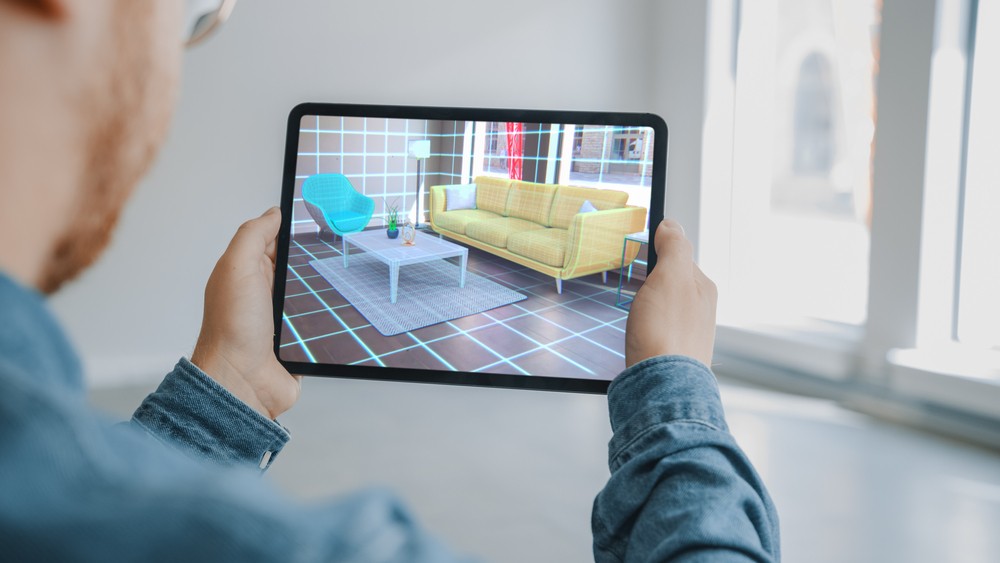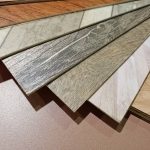Augmented Reality is transforming the way homeowners approach renovations, providing an innovative solution that merges technology with home improvement. With AR apps, users now have the ability to visualize potential home renovations in a realistic manner before making any purchases. This technology not only aids in making informed decisions but also helps in minimizing costly errors. As a consumer, this exciting development is worth exploring to ensure your home renovations are both personalized and economically viable.
Augmented Reality in Home Renovations
Augmented Reality overlays digital content onto the real world, enhancing your view by integrating interactive visual elements. By using your smartphone or tablet, these apps superimpose 3D models of design elements, such as furniture or architectural components, into your actual environment, allowing you to see what your space might look like after renovations.
Unlike traditional methods, such as blueprints or mood boards, AR apps provide a nuanced, interactive experience that allows you to explore various renovation options in real time. This visualization capability is a game-changer for homeowners making significant decisions about their living spaces.
Key Benefits of AR in Home Renovations
1. Improved Visualization
One of the most significant advantages of using AR apps for home renovations is the improved visualization. Many of us struggle to imagine how a new couch might look in the living room or if a cabinet color will complement the kitchen tiles. AR removes this uncertainty by allowing users to see changes directly in their environment. This visual clarity aids in making confident decisions, potentially saving time and money.
2. Enhanced Customization
Augmented Reality apps empower users to try different options and see which best fit their preferences. Whether it’s adjusting the color of a wall, altering furniture arrangements, or testing different flooring types, AR applications offer endless possibilities for customization. This flexibility ensures the renovation aligns with your personal taste and lifestyle needs.
3. Cost-Efficiency
Implementing changes to visualize them reduces the likelihood of costly mistakes. For instance, purchasing furniture or fixtures that don’t fit properly in the intended space can be avoided. By using AR, you can preview and modify your selections beforehand, ensuring you only invest in solutions that work seamlessly.
4. Streamlined Decision-Making
When it comes to home projects, decision fatigue is a common obstacle. Having countless choices in flooring, cabinetry, or decor can overwhelm even the most determined homeowner. AR apps simplify this process by providing an interactive, engaging way to narrow down your options. By visually seeing combinations and alterations, you can quickly eliminate choices that aren’t suitable, streamlining the decision-making process.
Popular AR Apps for Home Renovations
The market is flush with AR apps that cater to different aspects of home renovation. Each offers unique features tailored to specific renovation needs. Here are some popular options:
- Houzz: Known as a comprehensive platform for home remodeling and design, Houzz includes an AR feature called “View in My Room 3D,” which allows users to position thousands of products, from tiles to furniture, within their own spaces.
- IKEA Place: This app is a powerhouse for those looking to bring new furniture into their homes. IKEA Place lets consumers virtually place true-to-scale 3D models of IKEA products in any room, ensuring a perfect fit before buying.
- MagicPlan: For those planning renovations that involve structural changes, MagicPlan helps create floorplans and estimates work directly through AR. It’s a seamless solution for visualizing more extensive renovations, like knocking down walls or adding new rooms.
- Wayfair: An advocate of shopping for home goods online, Wayfair’s app includes an AR feature called “View in Room 3D.” This functionality allows users to see how furniture and decor available on Wayfair’s site will look in their space.
These apps change how homeowners plan and execute renovations, driving both savings and satisfaction by preventing investment in unsuitable products.
Practical Tips for Using AR Apps in Home Renovations
To maximize the benefits of AR technologies in your renovation projects, consider the following practical pointers:
1. Measure Your Space Accurately
To ensure the most accuracy when using AR apps, always start by measuring your space correctly. While AR apps are incredibly advanced, the technology relies on accurate data inputs. Proper measurements will ensure that when you visualize a piece of furniture or a renovation outcome, what you see on the screen closely reflects reality.
2. Experiment with Different Styles
One of the significant benefits of AR is experimentation without commitment. Take your time to experiment with bold colors, unusual layouts, or new design styles that you might not consider in a traditional setting. This experimentation could open up possibilities to innovations you might not have thought of otherwise.
3. Share with Others
Don’t forget to share your designs with others. Getting feedback from family members or friends can provide new insights or easy solutions to potential oversight. Most AR apps allow for easy sharing, which can be a part of your decision-making process.
4. Keep Lighting in Mind
Remember that lighting plays a significant role in how colors and objects are perceived. When using AR, try out different lighting scenarios to see how it affects the appearance of materials and decor in your space. This practice will help avoid surprises when transitioning from virtual to reality.
Cost Savings and Return on Investment
One of the most compelling aspects of using AR for home renovation is the potential cost savings. By providing an accurate preview of changes, these apps help you avoid purchasing items that don’t fit or match your space as anticipated. This efficiency is pivotal in cutting down unnecessary expenses.
Avoiding design mistakes means that fewer resources are wasted, and projects can remain within budget. Additionally, a well-planned renovation can contribute significantly to the home’s resale value, maximizing return on investment in the long run.
Challenges and Considerations
While AR provides incredible advantages, it’s also essential to acknowledge potential challenges and considerations:
1. Tech-Savviness Requirement
For some, adopting new technology may require a learning curve. Not everyone is accustomed to using AR tools, which may initially seem daunting. However, most AR apps are designed with user-friendliness in mind, offering tutorials and customer support to ease this transition.
2. Accuracy Limitations
Although AR technology has advanced significantly, occasional inaccuracies in rendering and scale can occur. Always double-check measurements and cross-reference them with traditional measurement tools before making large purchases.
3. Device Compatibility
Ensure your device is compatible with AR apps. Many high-quality AR apps require specific hardware features, such as LIDAR sensors, found in newer smartphones or tablets. An older device may offer limited capabilities, affecting the user experience.
The emergence of AR as a tool for home renovation planning offers consumers an intelligent, interactive solution that balances creativity with practicality. By leveraging these tools, you can make more informed decisions, achieving the dream home renovation without the associated woes. Whether you’re a tech enthusiast or a homeowner aiming for efficient planning, AR apps can enhance your renovation journey by blending imagination with innovation.



